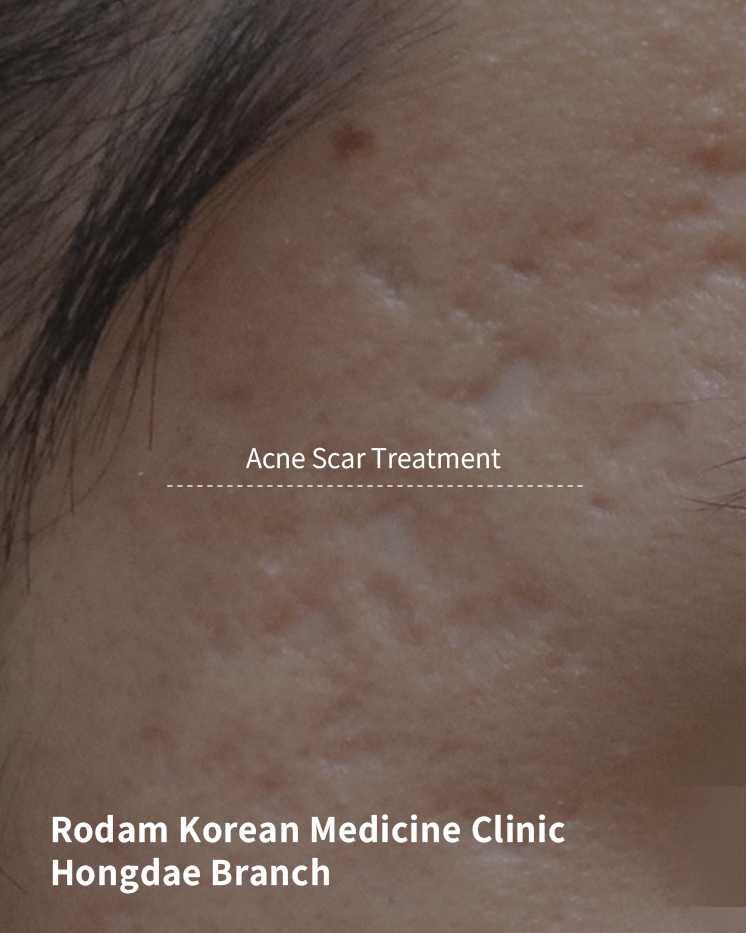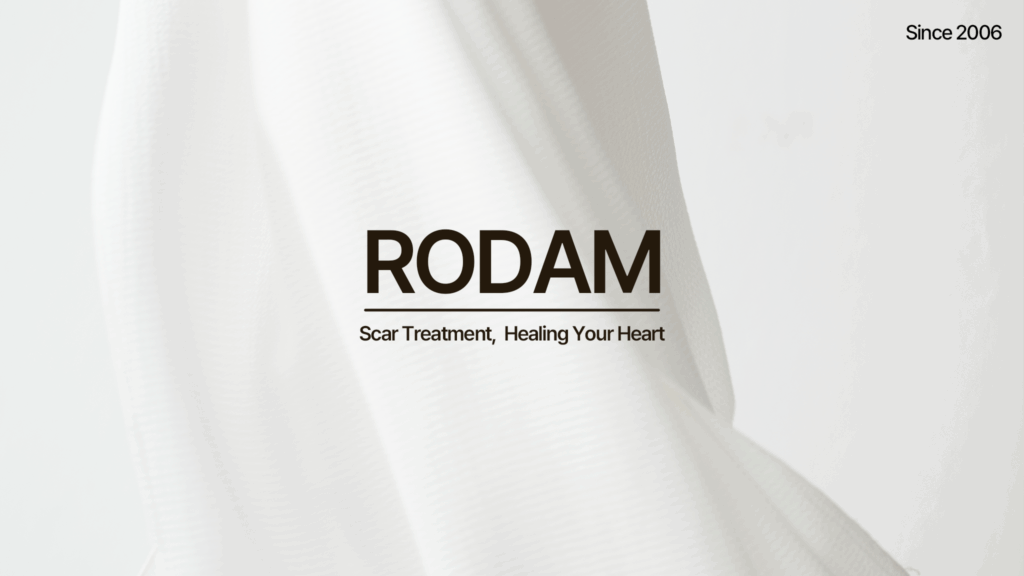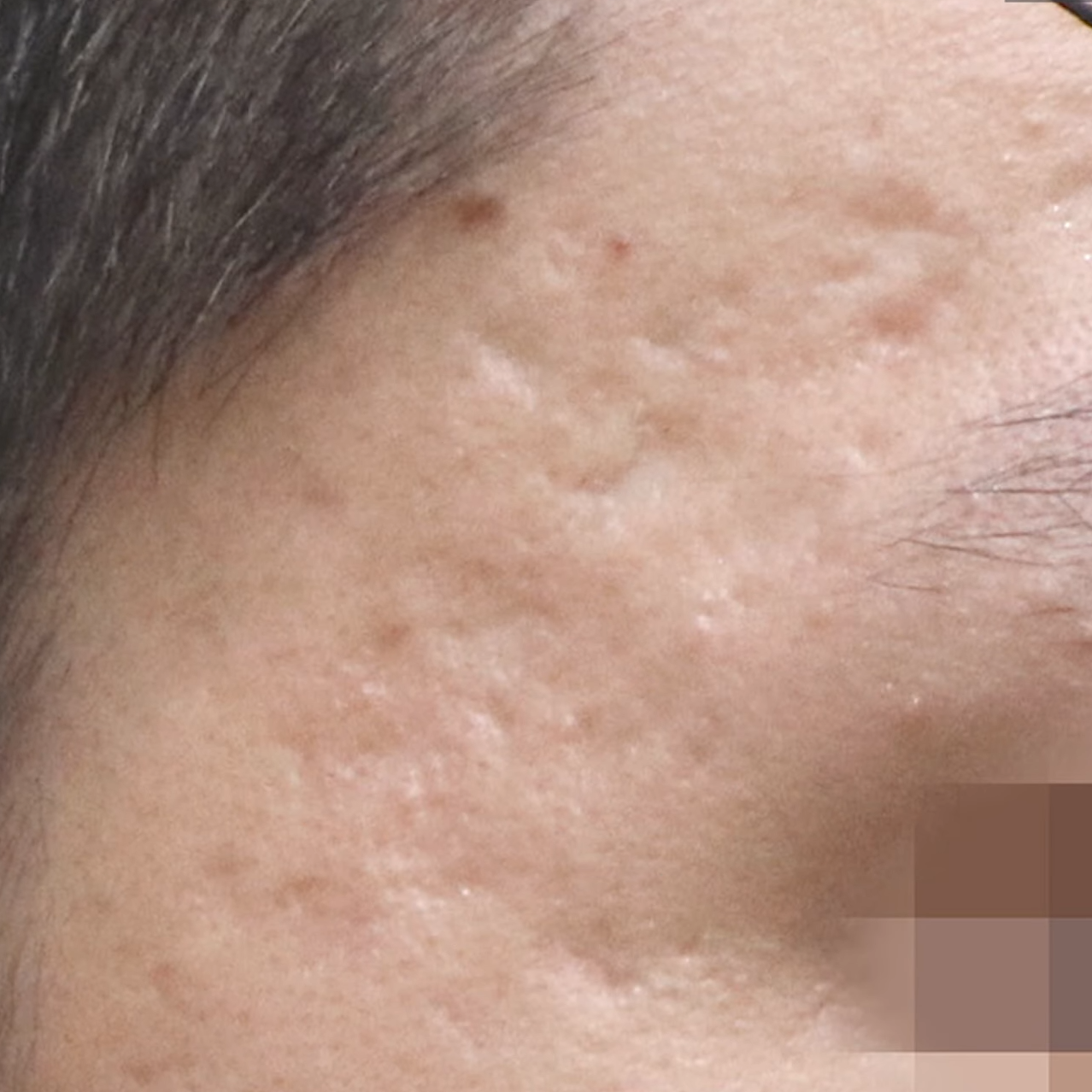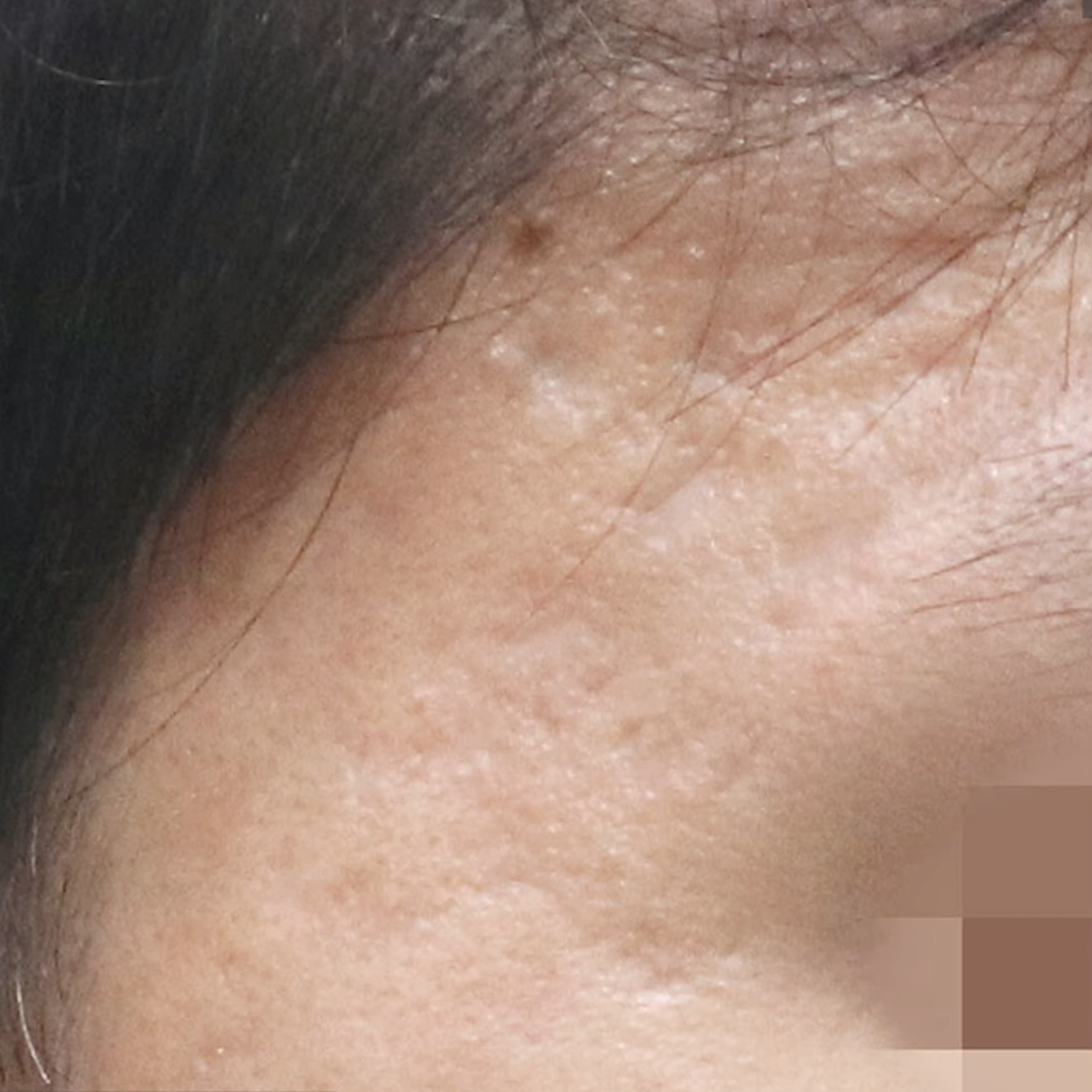
Case of Acne Scars on the Temples Treated with Coratherapy at Hongdae Korean Medicine Clinic

Hello, this is Dr. Sangwoo Jung from Rodam Korean Medicine Clinic, Hongdae branch.
Today, I would like to introduce the treatment case of a male patient in his 30s who visited us to improve acne scars on his temple area and the whitened skin caused by the scars.
Acne scars and pigmentation issues are concerns for many people.
Through this case, I will explain in detail how the treatment was conducted and what results can be expected.
The patient had deep acne scars in the temple area, which was a significant concern for him.
In particular, the skin around the scars had turned white, adding pigmentation issues, which caused him psychological stress.
The patient wanted not only to improve the shape of the scars but also to restore the whitened skin tone as close as possible to its original color.
The scars were classified as boxcar scars, which can be sufficiently improved with appropriate treatment.
The whitened scar area was also treated with Coratherapy to see how much the skin could recover.


After 4 sessions of Coratherapy
Case :: Acne scars on the temple area
History :: Previous experience of 2-3 dermatological treatments
Report :: 10 sessions of Coratherapy conducted
The temple area has thin skin and a lack of fat layers, making it prone to deep and noticeable scars during the process of acne formation and healing. Repeated inflammation and healing processes often result in depressed scars or skin discoloration, turning the surrounding skin white. Such scars are naturally bothersome in appearance, leading many to seek treatment.
In this patient’s case, the scars were deep, and the surrounding skin had turned white. While the depressed scars were a concern, the discoloration caused significant stress, prompting the question, “Can the depressed area fill in while the color returns to normal?”
It is indeed possible to fill in the depressed areas through treatment, but it is challenging for the whitened skin to completely return to its original color. However, with repeated treatments, it can become closer to a natural skin tone.
The patient decided to undergo 10 sessions of Coratherapy to address these concerns.

After 6 sessions

After 4 to 6 sessions, the surface of the scars began to soften, and the whitened skin gradually blended more naturally with the surrounding skin.
Compared to the results after 4 sessions, the scars had become less noticeable, and the whitened skin had significantly improved.
However, whitened skin may revert over time, so it is necessary to monitor the progress further.

After 10 sessions

This is the appearance after the final 10th session.
Compared to the initial visit, the improvement is evident. The boxcar scars have significantly faded, and the whitened pigmentation has also improved considerably.
Although 1 to 2 additional sessions could have made the scars even more natural, the patient was already satisfied and decided to conclude the treatment after 10 sessions due to their schedule.

This case demonstrates that consistent treatment can address both acne scars and pigmentation issues.
Acne scars and pigmentation are visible problems that cause significant stress for many people.
Particularly, the temple area, with its thin skin and lack of fat layers, is prone to deep and prominent scars if left untreated, leading to large and deep scars.
However, with the right treatment methods and consistent care, the skin can become healthier and brighter over time.
Coratherapy, in particular, is an effective method for treating both scars and pigmentation, offering hope to many individuals.
I hope today’s post helps with your concerns about acne scars.
For more detailed information, please check out the ‘Rodam Korean Medicine Clinic’ YouTube channel.

